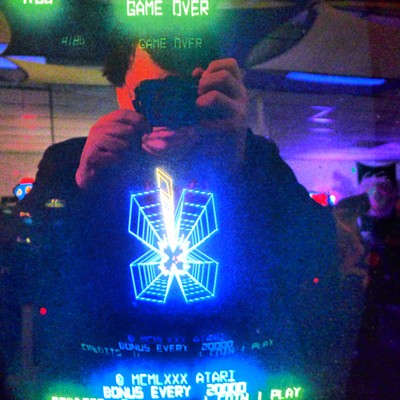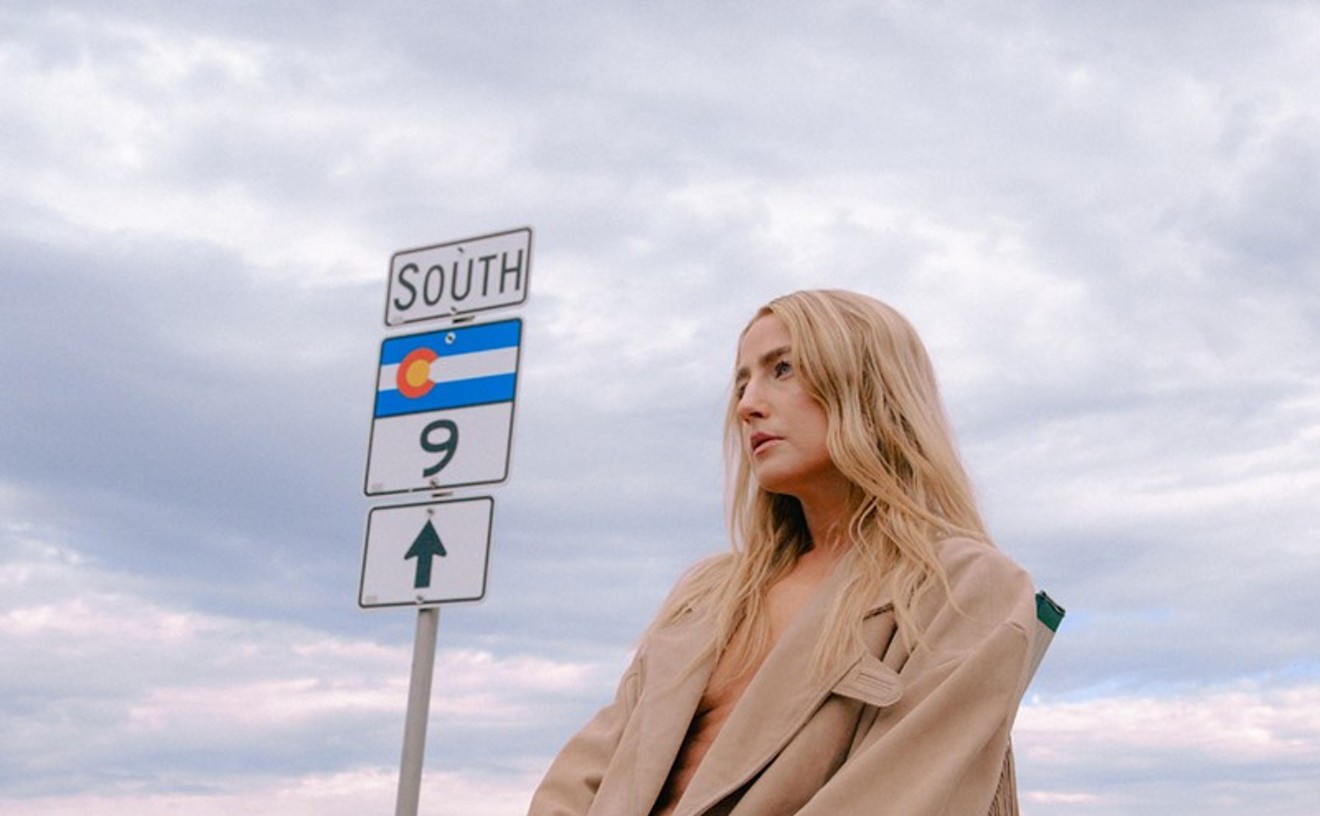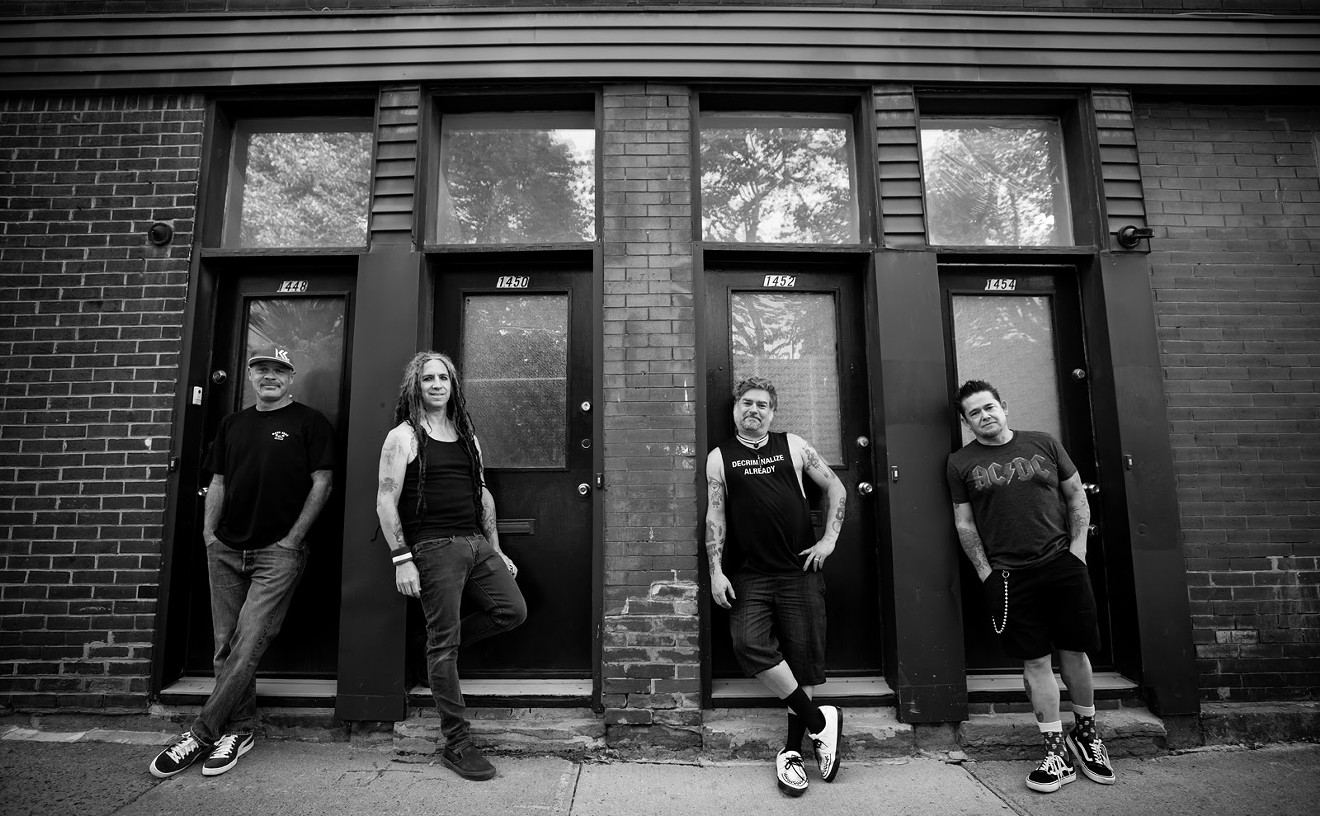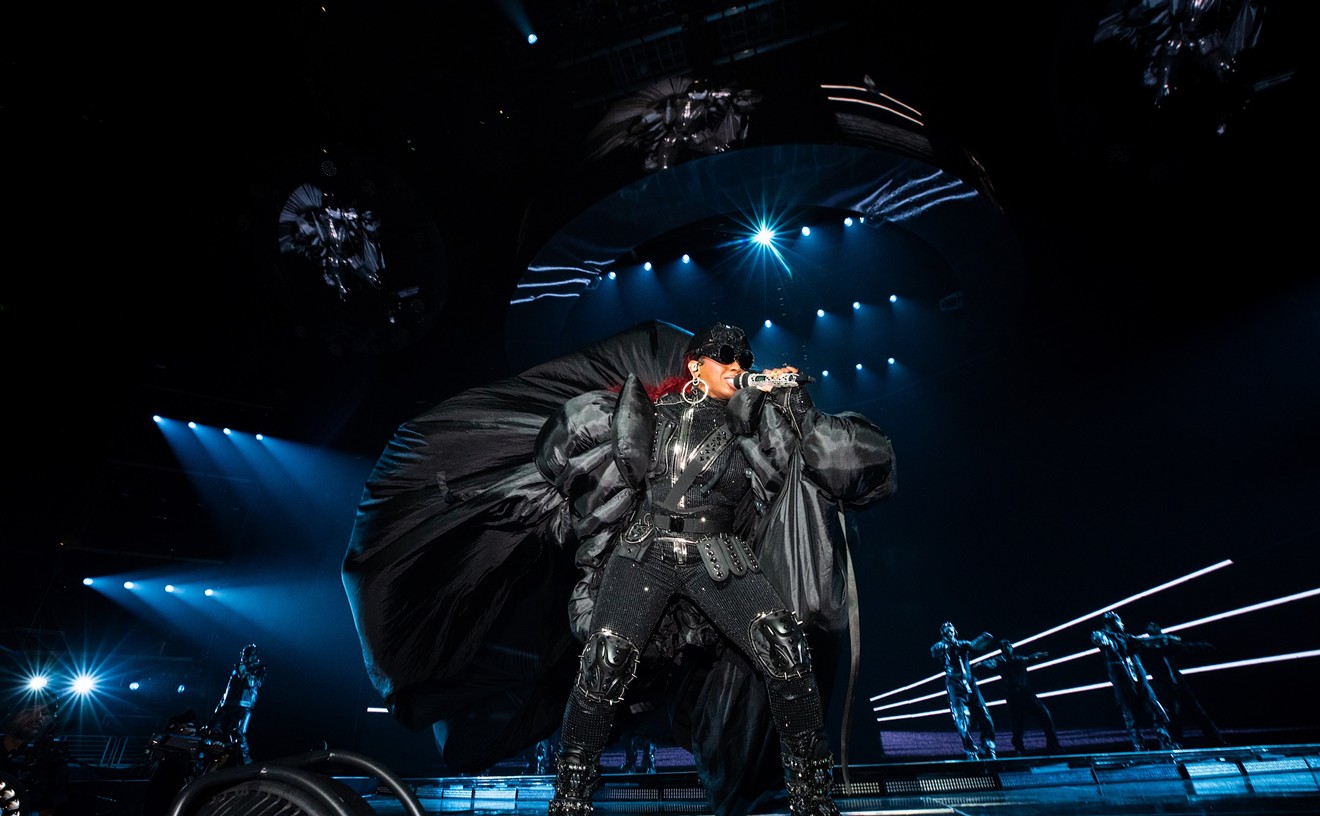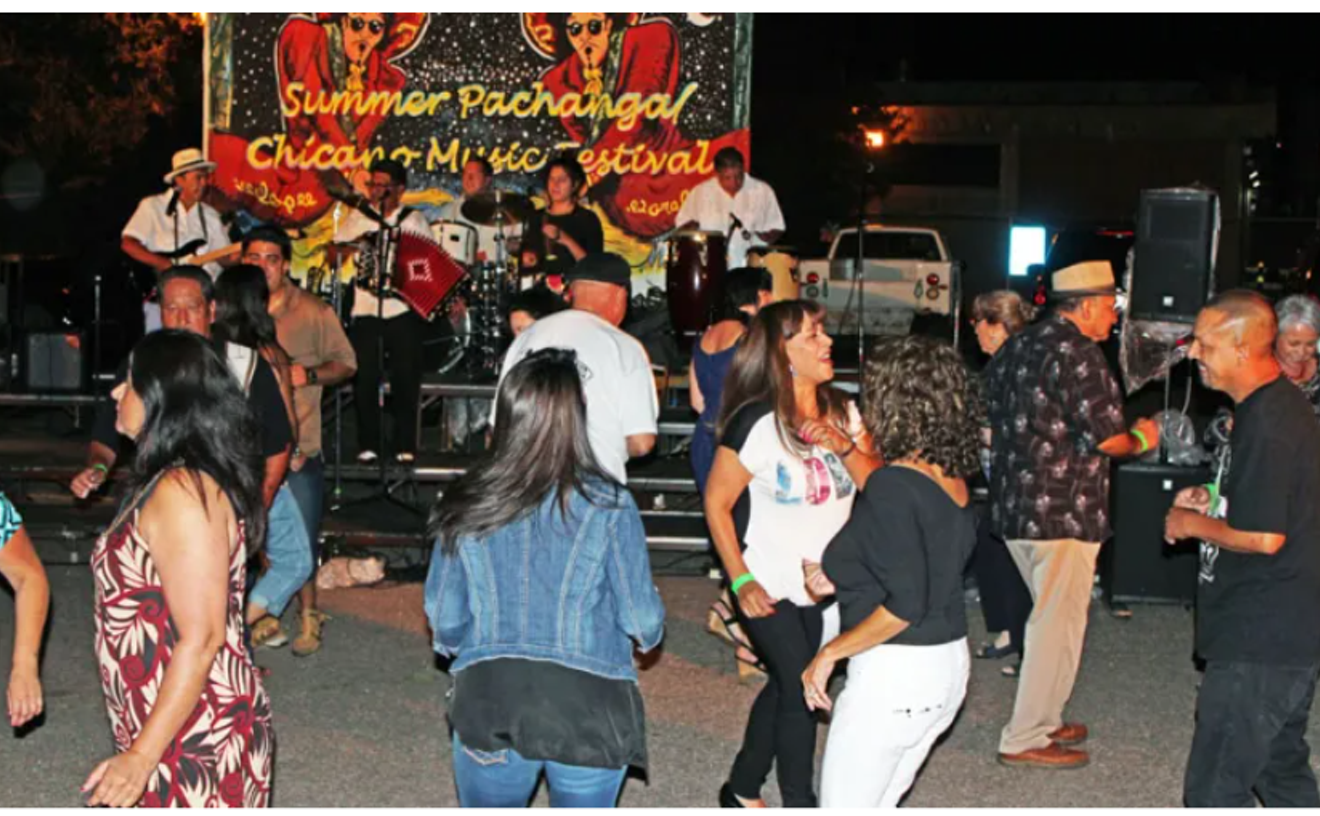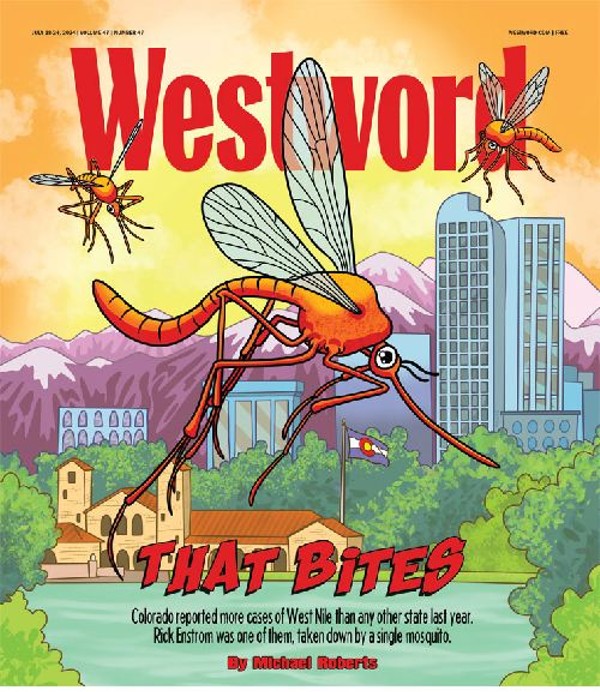Orchestral Manoevres in the Dark (due at the Bluebird Theater on Tuesday, March 22) is perhaps best known for its song "If You Leave," featured in Pretty in Pink, the classic 1986 John Hughes movie. But the band first made waves in its native England with its first two albums, a self-titled album and Organisation, which contained the hit single (and landmark of electronic pop music) "Enola Gay." A surprisingly visceral performance of that song was seen by audiences far and wide in the 1981 documentary, Urgh! A Music War.
The group's third album, Architecture & Morality, was hailed as a masterpiece of experimental electronic pop, and that release went on to sell three million copies. The follow-up, Dazzle Ships, was a dark, evocative affair that made brilliant use of samples and noises in a way that didn't seem to make sense to many critics and fans at the time of its release. (When the album was reissued in 2008, it was recognized as at least as great as its predecessor, if not a notch better, because of its willingness to push the art form a step further.)
The band continued well into the '90s. But after releasing the 1996 album, Universal, the outfit went on a ten-year hiatus. In 2010, OMD released what could be considered the true follow-up to Dazzle Ships in History of Modern -- the group's most fully realized record in twenty-seven years.
We had a chance to speak with the affable and thoughful Andy McClusky about becoming a bass player, the influence of '70s Krautrock, Dazzle Ships, then and now, as well as why the artwork of longtime Factory Records artist Peter Saville suited OMD's most recent release.
Westword: Why did you retain bass and drums as a studio and live band rather than go completely electronic in your early days and through to today?
Andy McClusky: Good question. When I first got into music, I wanted to play, and I settled on bass guitar, simply because I couldn't afford a drum kit, and I wanted to be a drummer. Six-string guitar was too damn hard. So I saved up all my money on my sixteenth birthday -- I got everyone to give me cash -- and I went down to the local second-hand store and bought a bass. So from the age of sixteen, I owned a bass.
And almost immediately afterward, I discovered Kraftwerk. And myself and my school friend, Paul Humphries, we got inspired by Kraftwerk, but we couldn't afford any of the fancy electronic gear that those guys had. So we used to just kind make weird noises around at his mother's house on anything we could get our hands on, including my bass and bits of dismantled radios, and Paul started making things.
We always had that bass, because I had a bass. We weren't consciously trying to avoid it. Maybe because bass guitar didn't seem to be quite so rock and roll, so much as a drum kit or a lead guitar. As soon as we started playing live, we played for eighteen months with just the two of us and a tape recorder, and we put the drums onto the tape.
The drums kind of happened by default. Our drummer, a friend of ours, joined the band when we expanded to a four-piece; he's still in the band now, Malcolm Holmes. We toured in February 1980 with an electronic drum kit that we made ourselves, and it broke every frickin' night. About the third or fourth gig, Malcolm said, "If I can't have some of my real kit, I'm going home, because I'm not embarrassing myself with this damn thing that breaks down every night."
It was just circumstances, really. I think that, perhaps, all these unconscious things lead us to accidentally, actually, creating a sound of our own. I think the sound of OMD is the combination of electronics and sort of a human element. It's that juxtaposition between the hard and the cold and the warm. That kind of melancholy we have is actually the tension between the organic and the electronic.
The very first bass I had was a thing called a Wilson Rapier bass. It was made by a company called Watkins, who is a British guitar manufacturer. It was the only one I could afford. It was the cheapest one in the shop, and it was left-handed. And I'm right handed. So I learned to play upside down. I'm the only bass player I know who still -- to this day, now that I'm 51 -- plays a right-handed bass but with my strings upside down, because I learned to play upside down.
But actually, I think that gave me quite a distinctive sound. The way I play, I'm sure, is informed by the way the strings are laid out. Unfortunately, the first time we ever played in London that bass of mine got stolen, so I had to move on to buying right-handed basses and having them strung upside down. I now play a Fender Jazz but the strings are still upside down.
You spoke at length in that The Arts Desk interview how Kraftewerk was a big influence on OMD, in what way would you say that Neu! influenced your music, and did you get to see them as you did Kraftwerk early on?
I think the initial influence was Kraftwerk. I heard "Autobahn" on the radio pretty much the summer I turned sixteen and the summer I got my bass. I went to see those guys play in Liverpool. It was 1975, September the 11th. It was at the Liverpool Empire Theater, and I sat in seat Q36. It's indelibly burned into my mind because it was the first day of the rest of my life. These guys came out at the height of '70s rock music, and they were wearing suits and ties and playing weird electronic instruments and making a sound like I'd never heard before. And that was it -- I was hooked.
But when you get hooked, you try to find all of their back catalogue. And then you try to find anything else that was German, and we came across Neu! Of course some of the guys from Neu! used to play with the Kraftwerk guys because they were from Dusseldorf. I guess it goes back to the first conversation we were having. There's an element which is very organic and it's very melancholy, and that is very much part of our mentality and our sound.
Dazzle Ships is probably the most interesting of OMD albums because it's so experimental yet accessible. With the general critical acclaim upon the album's 25th Anniversary reissue in 2008, what do you think might have changed in the climate of musical tastes between then and now?
It's interesting, isn't it? We've had that one re-released, and we had Architecture & Morality re-released prior to that. Now with the passage of time... in the '90s, the electro thing went right out of fashion, and our vision of the future was no longer the future. It was actually the past, which was quite hard to get our heads around.
Every generation rejects its immediate predecessor. And then you get another bunch of younger people, in the new millennium, who rejected the rock and roll clichés that came back in the '90s, and they were looking for something that was theirs and was futuristic. In fact, they discovered a vision of the future that was actually from the past.
As I'm sure you're aware, we went from Architecture & Morality, which sold over three million, to Dazzle Ships, that sold three-hundred thousand. We lost ninety percent of our audience. Commercially, it was a catastrophic failure. Now Dazzle Ships and Architecture & Morality are talked about as our masterpieces. Particularly, Dazzle Ships , which is kind of the fractured, lost masterpiece of OMD, the one where OMD really stood out like a sore thumb from the rest of the world and went, "No, this is music too!" Of course we got shot to bits at the time.
It's funny how time changes things, and now, even Architecture & Morality, which sold lots at the time, didn't get great critical reviews. People didn't get it. They were like, "Why are you doing all this weird religious choral music and strange ambient pieces?" Even though it had three top five singles in the U.K., the rest of the album was pretty bloody weird. It's funny that these things now are treated as some sort of iconic masterpieces, yet at the time, people were scratching their heads going, "Is this music?" [laughs] Obviously, we are delighted. Finally the world catches up with us.
In hindsight, I guess I can see [where they're coming from]. Dazzle Ships was a really very conceptual album. We were struggling to make an album. In fact, we were consciously trying to not repeat the successful formula of its predecessor. Most bands now, if they had an album that sold several million, they'd go back into the studio and make the second version of that album. We consciously went in a completely different direction.
The ideas on Dazzle Ships are wonderful. Some of the ideas like "Timezones," "ABC" and "Auto Industry" -- I'm so proud of what we tried to do. We just left the bare bones. We didn't sugar coat it. We didn't really sweeten the pill. So in hindsight, I can understand people listened to it and went, "What the fuck is this?" Then you've got wonderful people like you who connected with it.
There are a lot of odd and interesting noises that one hears on Dazzle Ships. Were those only available in the studio during the recording process, or did you manage to pull all of that stuff off live as well?
Well, we put them on tape. We were never frightened to use tapes. We started with a tape recorder. Orchestral Manoeuvres in the Dark wouldn't have existed if we didn't have a friend who had a four-track tape recorder and a studio in his garage. Basically, Paul and I, we'd been making all these weird songs in his mother's back room for three years. We never dared to go play them live because even our best friends thought it was shit.
We met this guy and we said, "Can we borrow your tape recorder?" Then we put stuff on to the tape recorder and then played live in this New Wave club called Eric's, in Liverpool. We just did all of this for a one-off gig. It's why we had such a preposterous name, as well. We never envisaged it becoming a career, for Christ's sake. It was just a mad idea. When we came to playing live, it was just, "Hey, can you play that, can you play that? No, we can't. Stick it on the tape." Our poor drummer spends his entire life just listening to click tracks off tape recorders -- and now off laptop computers.
We make no bones about it that we love making songs out of things that you're not supposed to make songs out of. It's really nice to find some interesting building blocks that aren't just conventional bass drum or snare drum. Obviously, it automatically takes you down a totally different musical pathway and creates a completely exciting, evocative musical environment, which you then get inspired to sing or create on top of.
What is it about Peter Saville's artwork that you feel captures visually the aesthetic of OMD?
We loved working with Peter. He has remained a solid friend of mine throughout the years. I've always loved spending time with him. He's such a great sounding board. He's such an intelligent and clever man that if you ever got a thought in your mind, you just bounce it off Peter he'll put a spin on it and throw it back at you. I just love hanging out with him and bouncing stuff off his brain.
When we came to have this mad idea of making a new album, we were conscious of what we were trying to do and we were conscious of the style we were going to utilize. We were going to try to go back to the kind of sounds...essentially the voice that we'd invented for ourselves in our first four albums. Paul and I were consciously sort of saying, "The first four albums -- up to and including Dazzle Ships -- that was the voice we created for ourselves, and we want to speak in that voice again."
But we also don't just want to be on some kind of nostalgia trip here. It has to be relevant and sound like now. So History of Modern was the appropriate title, and it seemed appropriate to go back to Peter. Essentially we were trying to do another modern album.
In the mid-'80s, frankly, when we became successful in America, we were plying a trade that was a bit watered down and a bit more conservative. So we were consciously trying to get back in touch with our own musical roots. But not just in a totally retro way. To try and do something that still made sense, that still went forward and had strong and interesting ideas. I told Peter the title ages ago, and because he's notoriously slow, I said, "I'm going to tell you this now, and you've got a year to work on it, so for once in your life, don't keep us waiting for the fucking thing." He's always so slow.
I think that Peter and the guys he works with at a design company in Manchester called Four23, and a young guy named Darrell Hartman -- I loaded them up with what I thought I wanted to see from my own inspirations, which come from twentieth century Modernism and Constructivism imagery. But I said, "It can't look like that. It can't look like a Mondrian. It's got to take those Constructivist ideas, but it's got to be right for 2010, 2011." Peter got it so he distilled out the simple geometry of twentieth century Modernism but he executed it with a computer graphic and vibrant modern covers. I think he did the appropriate sleeve for what we hoped would be the appropriate album.
OMD with Oh Land, 7p.m., Tuesday, March 22, Bluebird Theater, $30.75-$35, 303-830-8497, 16+
Follow Backbeat on Facebook and on Twitter at @Westword_Music.


